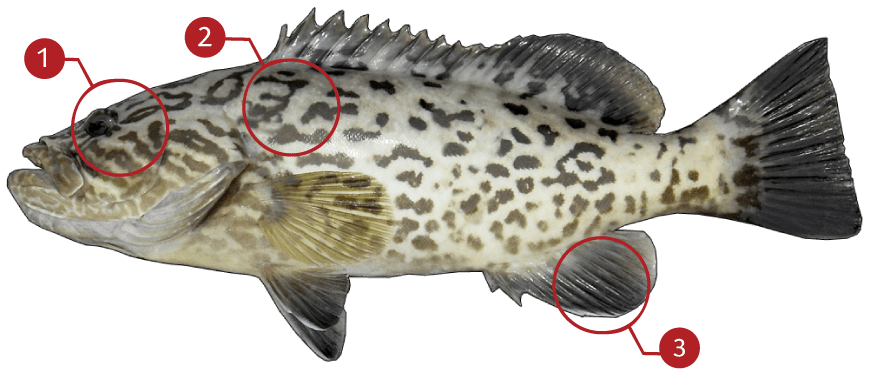GAG GROUPER
How to identify a Gag Grouper
The coloration of this species is extremely variable but generally brownish gray overall with a pattern of dark, worm-like or kiss-shaped markings along the sides. Gags can be distinguished from black grouper, Mycteroperca bonaci, that often occur in the same habitat by the distinctive color pattern and the shape of the preopercle (the middle bone of the gill cover). The gag has a noticeably notched preopercle with a distinct lobed appearance while black groupers have an evenly rounded preopercle with no definite lobe below.
Where to catch Gag Grouper
The distribution of the gag grouper extends in the western Atlantic from North Carolina, USA (with juveniles occurring as far north as Massachusetts) to Yucatan Peninsula, Mexico; it is rare in Bermuda and absent from the Caribbean and Bahamas. Gags are the most common grouper on rocky ledges in the eastern Gulf of Mexico. Juvenile gags reside in estuaries and seagrass beds while adults are usually found offshore on hard substrate in water depths of 60-250 feet (rarely to 300 feet) and occasionally inshore on rocky or grassy bottom. Adults are either solitary or found in groups of five to 50 individuals.
IDENTIFICATION

| |
Dark lines radiate from the eyes |
| |
Brownish gray overall with a pattern of dark, worm-like or kiss-shaped markings along the sides |
| |
Fins are dark, with white edges on anal fin and tail |
TARGET AREAS
|
|
Acknowledgements: We thank TAKEMEFISHING.org (www.takemefishing.org), Wisconsin Department of Natural Resources, Indiana Department of Natural Resources for their contributions to these FISH FACTS.

